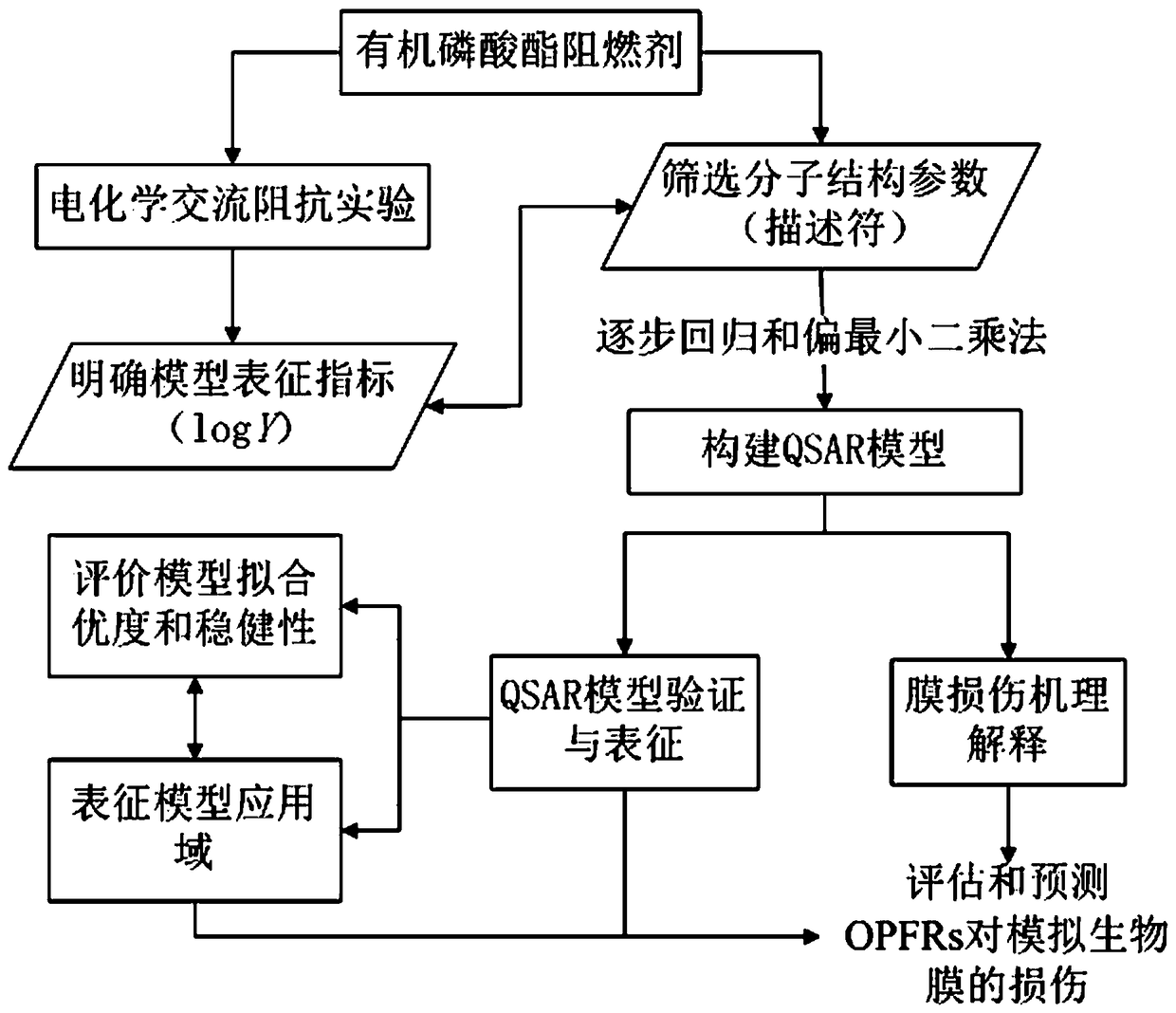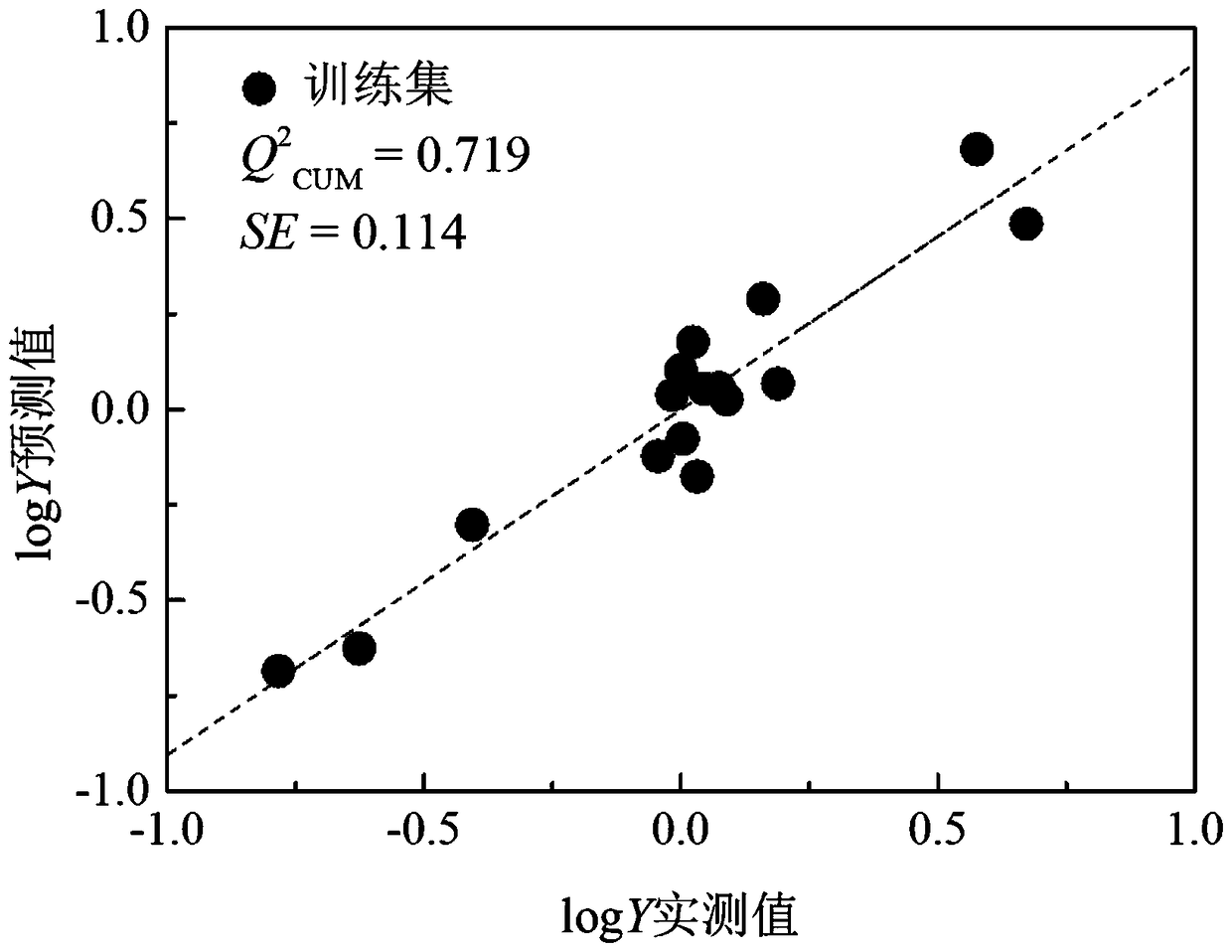Method for assessing and predicting damage of organophosphate flame retardant to simulated biomembrane
An organic phosphate, biofilm technology, applied in special data processing applications, instruments, electrical digital data processing, etc., can solve the problem of consuming a lot of manpower and material resources, and achieve the effect of convenient operation, wide application area, saving manpower and material resources
- Summary
- Abstract
- Description
- Claims
- Application Information
AI Technical Summary
Problems solved by technology
Method used
Image
Examples
Embodiment 1
[0095] Tris(2-Ethylhexyl) Phosphate (TEHP): The leverage value is calculated by Williams diagram method hi is 0.521 h *(warning value) = 1.31, standard residual ( SE ) = 1.40 Mor04 V The value of increased from 0.147 to 1.95, and the drug-likeness index decreased from 0.80 to 0.30, representing the atomic polarizability GATS7p Increase from 0.557 to 1.10, which makes it easier for the compound to insert or attach to the outer surface of the membrane, increase the electrode impedance of the membrane, and interfere with the signal transmission and related pathways on the membrane.
Embodiment 2
[0097] Tris(2-Chloroethyl) Phosphate (TCEP): The leverage value is calculated by Williams diagram method hi is 0.218 h *(warning value) = 1.31, standard residual ( SE ) = -0.484 > -2.50, indicating that this compound is within the application domain of the QSAR model. The alkyl substitution at the end of the carbon chain of TBP becomes halogen (Cl) substitution, and the experimentally determined impedance value of halogen (Cl) substituted TCEP is 0.0173 compared to the impedance value of alkyl-substituted tributyl phosphate (TBP) 0.626 According to the mechanism analysis of the QSAR model, TCEP contains a halogen-substituted functional group, which leads to an increase in the electronegativity of the compound, which reduces the drug-like index from 3 to 0, which represents the atomic polarizability. GATS7p Increased from 0.557 to 0.674, it is easy to interact with receptor protein molecules to insert or attach to the outer surface of the membrane, thereby increasing the el...
Embodiment 3
[0099] Tricresyl Phosphate (TMTP): Calculate its leverage value by Williams graph method hi is 0.678 h * (warning value) = 1.31, standard residual ( SE ) = -0.911 > -2.50, indicating that this compound is within the application domain of the QSAR model. The experimentally determined TMTP impedance value is -0.406, which is significantly increased compared with the impedance value of 0.577 for tri-p-cresyl phosphate (TPTP) substituted by the same aromatic ring. According to the mechanism analysis of the QSAR model, the aromatic ring substitution and TMTP, due to the benzene ring The substitution position of the methyl group on is from the para position to the meta position, which reduces the steric hindrance of the compound, and is a descriptor that characterizes the spatial arrangement of atoms and the three-dimensional structure Mor04 V The value of is reduced from 0.797 to -0.257, representing the atomic polarizability GATS7p Decreased from 1.87 to 0.431, characterizi...
PUM
 Login to View More
Login to View More Abstract
Description
Claims
Application Information
 Login to View More
Login to View More - R&D
- Intellectual Property
- Life Sciences
- Materials
- Tech Scout
- Unparalleled Data Quality
- Higher Quality Content
- 60% Fewer Hallucinations
Browse by: Latest US Patents, China's latest patents, Technical Efficacy Thesaurus, Application Domain, Technology Topic, Popular Technical Reports.
© 2025 PatSnap. All rights reserved.Legal|Privacy policy|Modern Slavery Act Transparency Statement|Sitemap|About US| Contact US: help@patsnap.com



